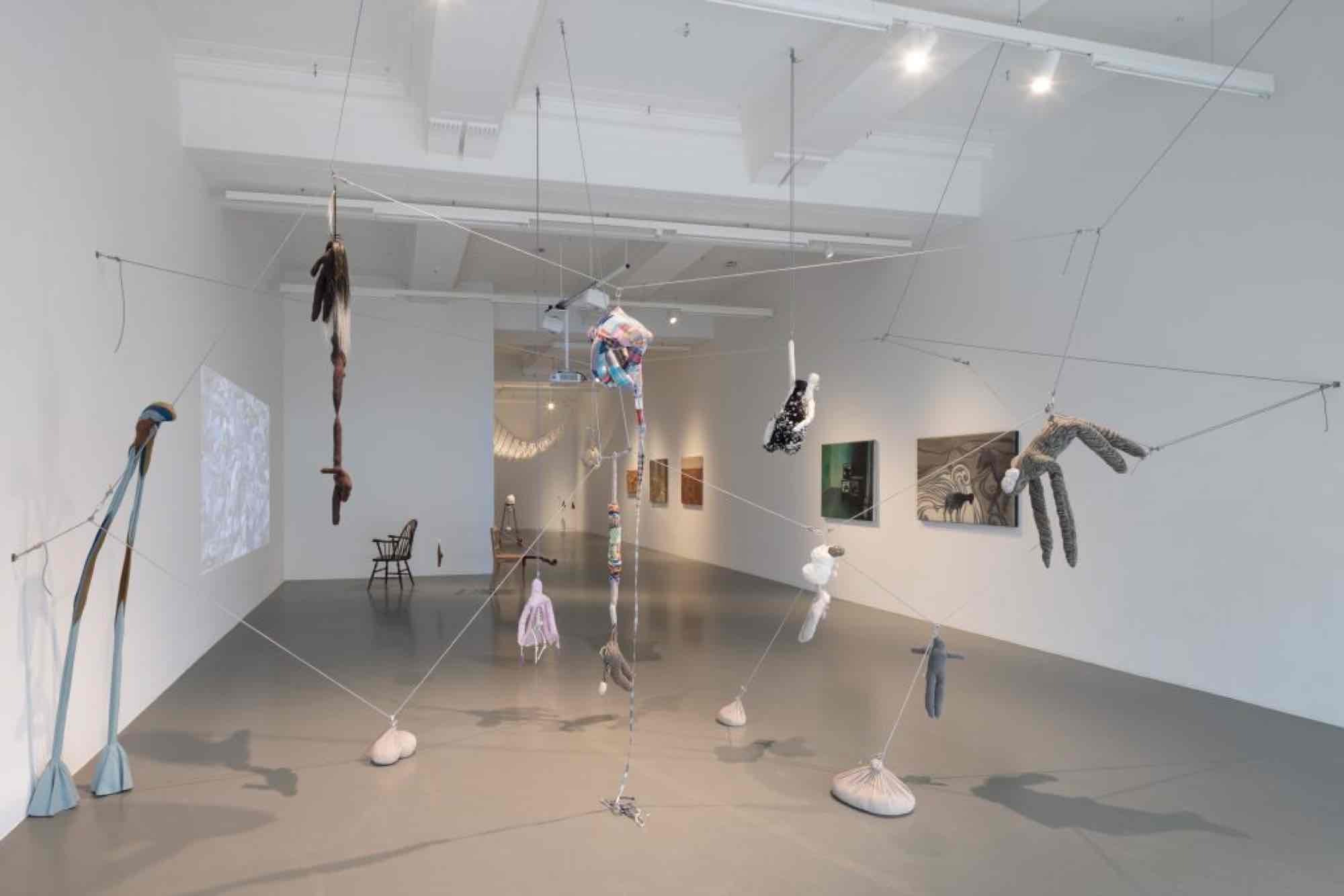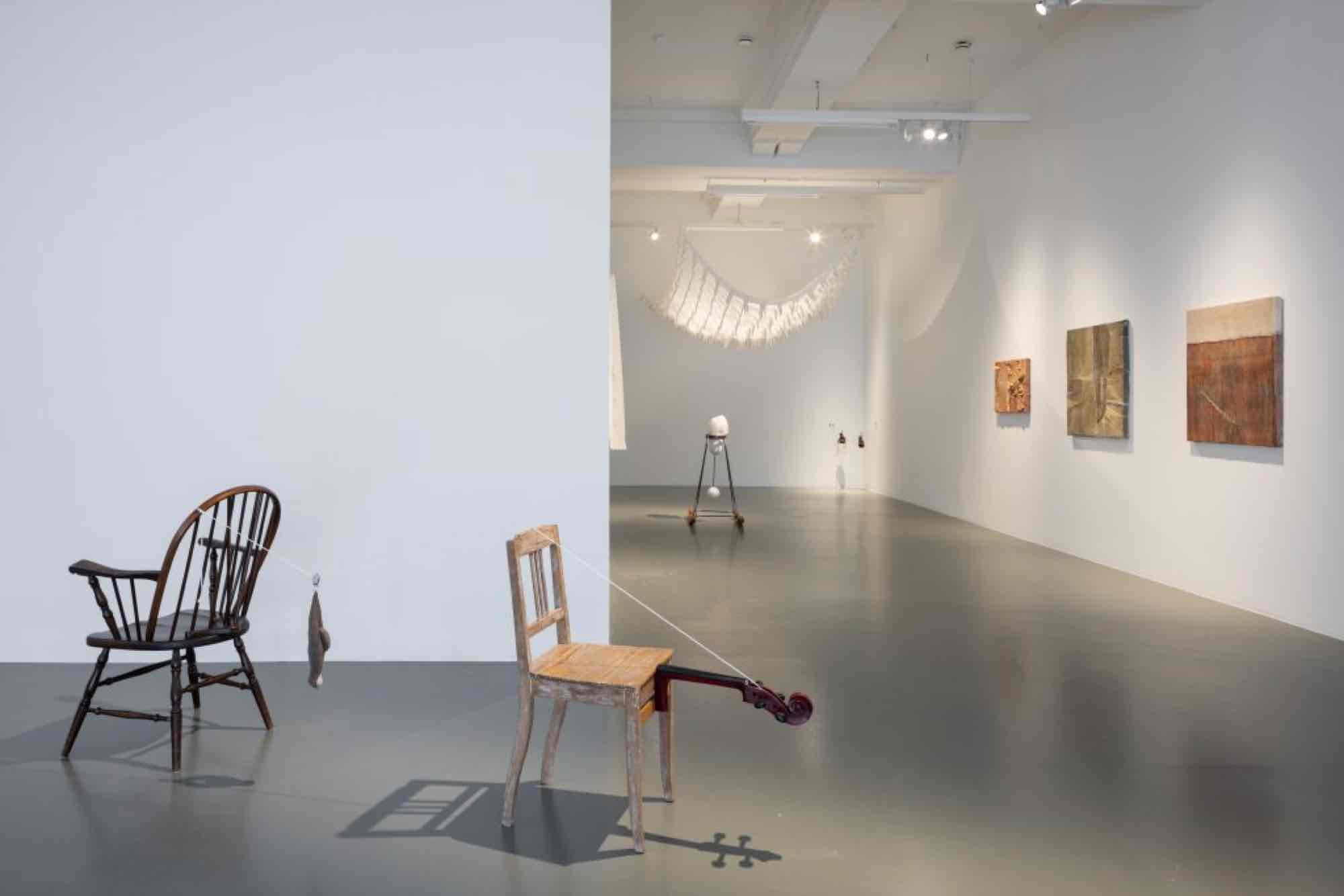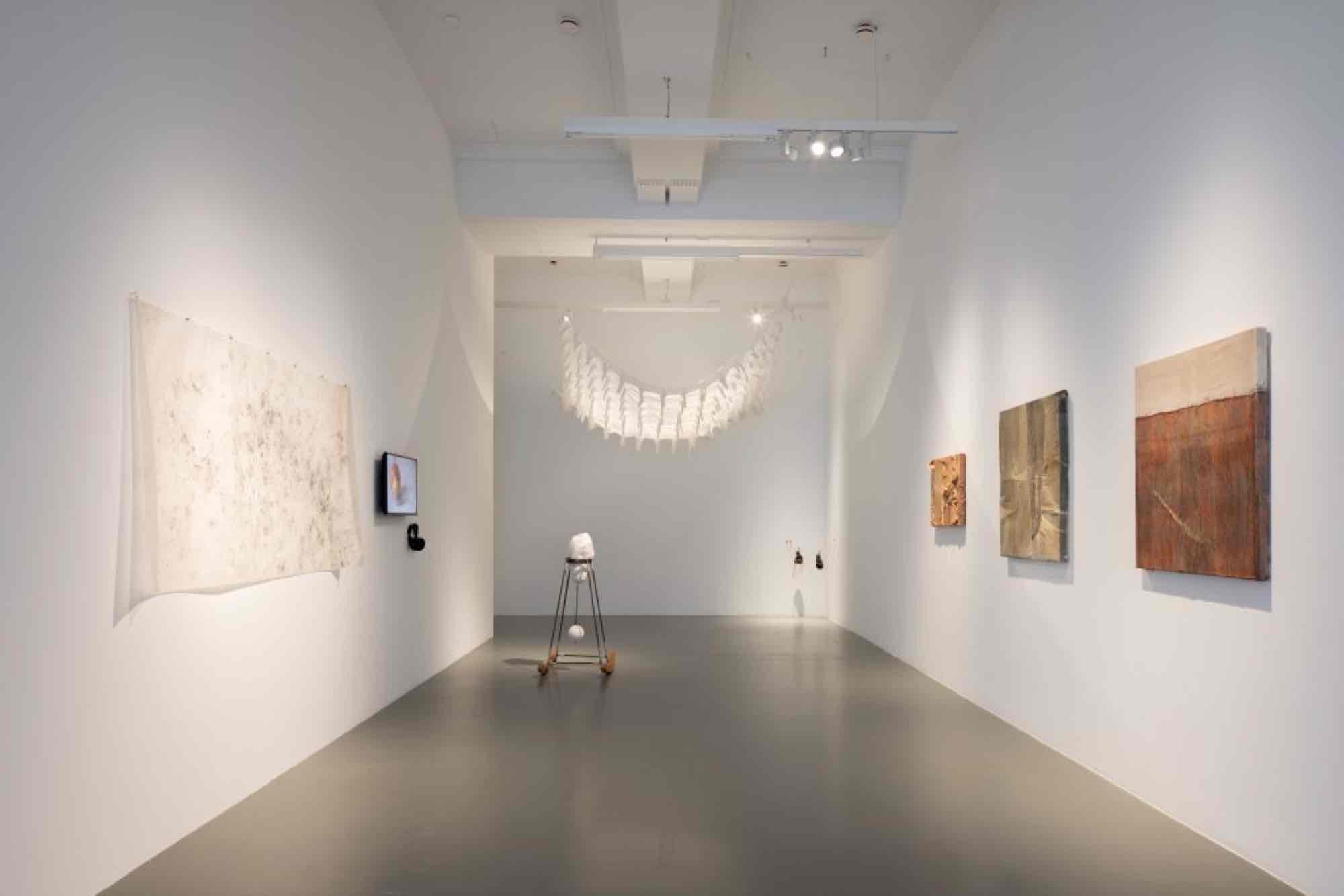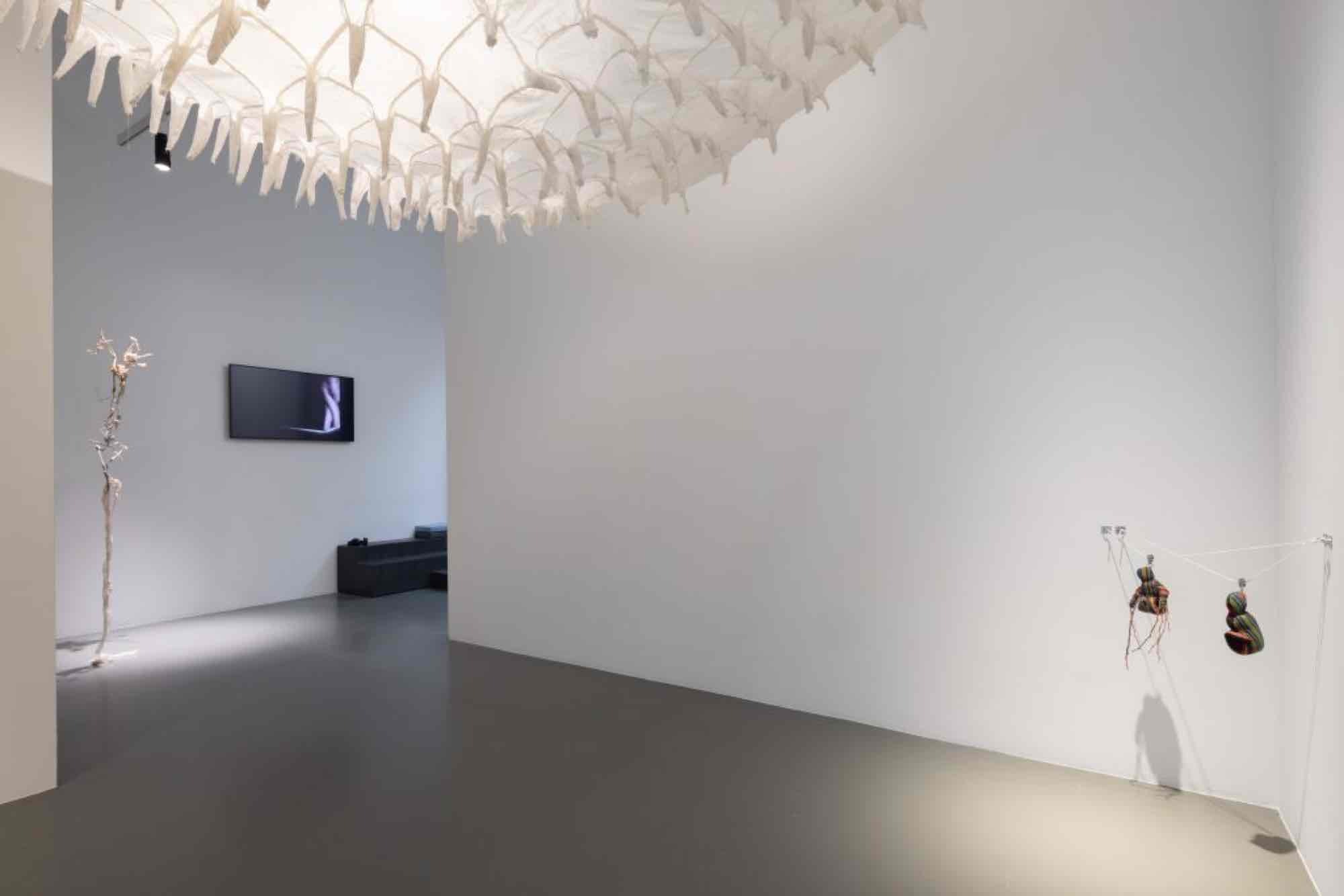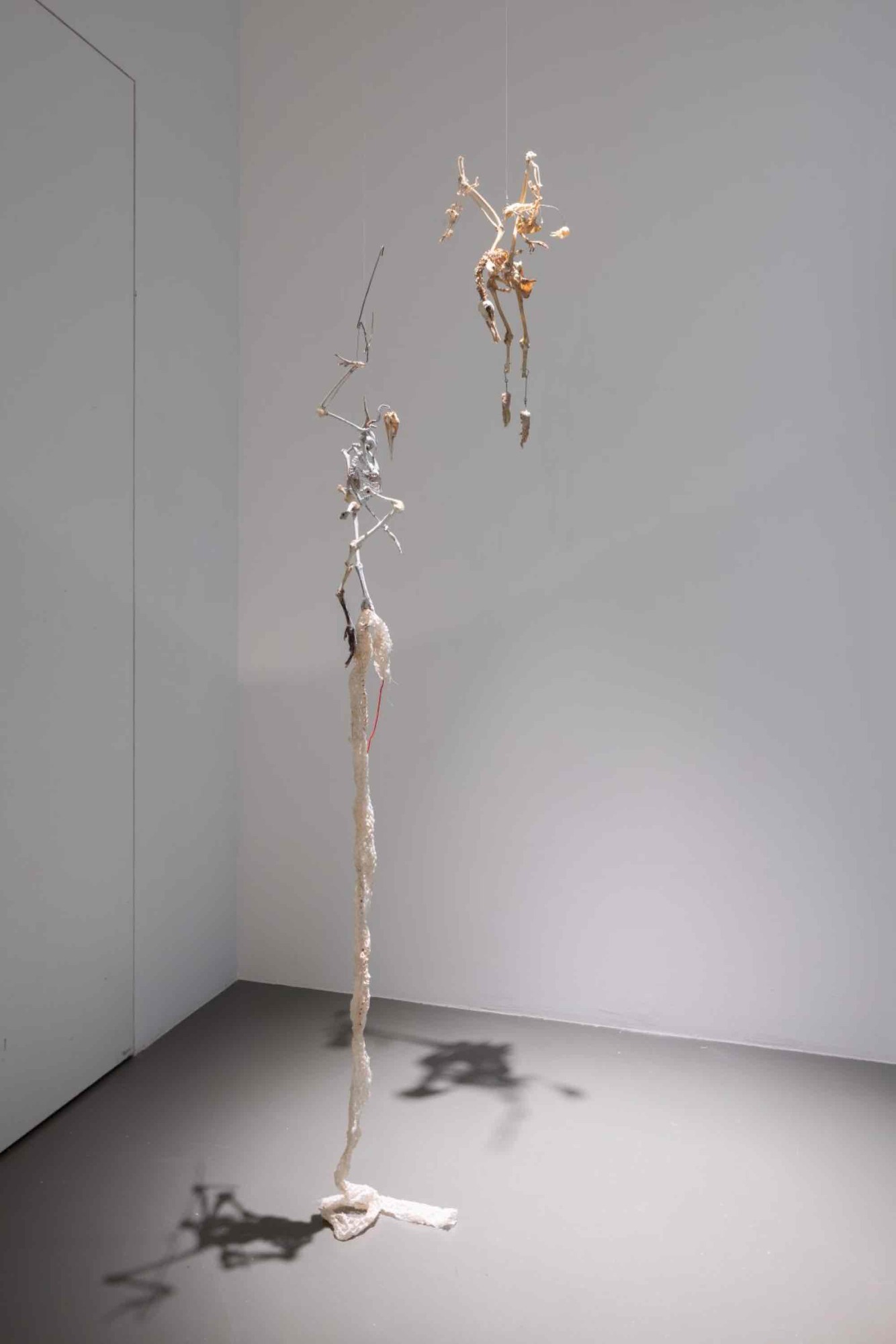Patricia Belli
Dirt and Myth
12 Sep - 10 Nov 2024
Dirt and Myth is Patricia Belli’s first solo exhibition in Germany at daadgalerie. Belli was born in 1964 in Managua, Nicaragua, and was a fellow of the Artists-in-Berlin Program (BKP) in 2021/2022.
Working across a range of disciplines, Patricia Belli mobilizes fibers, everyday objects, and handcrafted media to explore the entanglement between bodies and systems, and the precarious balance that conditions them against structures of violence. Touching on themes related to gender, sexuality, and processes of transformation, her works bring to the surface a textural language that is rooted in a multiplicity of desires. Working with the body and lived experience as starting points, Belli recuperates somatic sensibilities as an archive of knowledge and site of articulation. Through sewing and other craft-based practices, she gives texture to that which is fragile, feminized, and otherwise precarious. By giving form to marginal bodies that are situated between local and global contexts, her practice materializes as a counter-poetics to heteropatriarchal systems.
Around twenty-five works by Patricia Belli from various phases of her artistic career are being shown at daadgalerie. Spanning from the mid-1990s to the present day, the presentation includes sculptural objects, video works, and a new version of her installation El Circo (The Circus, 2001), which occupies a central position in Belli’s oeuvre. In Tierra Quemada (Scorched Earth, 2024), a series of silkscreen pieces produced especially for the exhibition Dirt and Myth, and likewise in her video work Recuerdos (Memories, 2022), Belli focuses on contemporary social and environmental crises such as climate change and war.
Having studied in the United States during the peak of the U.S.-backed Contra Wars in Nicaragua (1981–90), Belli returned to Managua in 1987 after graduating from Loyola University with a BFA in Fine Arts. In 1990, she formed part of an artist collective called ArteFacto—a briefly active yet critical group that challenged the status quo through experimental aesthetics rooted in cross-disciplinary and performance-based practices. With the support of a Fullbright scholarship, she received her MFA from the San Francisco Art Institute in 2001. That same year, Belli returned to Nicaragua and founded EspIRA (Space for Artistic Research and Reflection), an experimental and evolving pedagogical project rooted in collective dialogue and collaborative learning.
Stemming from an ethos of self-exploration and material inquiry, Belli’s early works explore feminized embodiment(s) through the gendered underpinnings of everyday objects. In works such as Herida (Wound, 1995) and Novia (Bride, 1995), she scrutinizes constructions of femininity against the sensual textures of women’s clothes. By sourcing thrifted garments imported from the United States, these works carry affectual residues that touch on the history and afterlife of the bodies that once wore them. In Triángulo (Triangle, 2000), she continues her somatic investigations by turning to domestic objects to create anthropomorphic structures that reveal conditions of constraint. This work was created around the same time as Belli’s large-scale installation, El Circo, which, she says, speaks to the “risk of circus spectacle and melancholy of circus life” produced by the hold of machismo.
In her more recent works, Belli continues to build on themes of fragility and violence through installations or objects that at times invite participation. In works such as Pesadilla (Nightmare, 2019), cycles of violence are produced that speak to the precarious relationship between bodies and objects, and the slippage that occurs when bodies become objects that are battered under larger systems of oppression. Alongside these works, the artist continues to foreground textiles to explore how structures of violence and mechanical systems map onto mechanisms of the body, and nature more broadly. Such is the case in Cielo de Leche (Milk Sky, 2019), where a delicate white blanket with protrusions resembling udders hangs over the viewer like a sky with the promise of milk. Positioned just beyond reach, the work evokes a delicate yet menacing sensation that touches on the precarious veil that separates nurture from structural violence.
Working across a range of disciplines, Patricia Belli mobilizes fibers, everyday objects, and handcrafted media to explore the entanglement between bodies and systems, and the precarious balance that conditions them against structures of violence. Touching on themes related to gender, sexuality, and processes of transformation, her works bring to the surface a textural language that is rooted in a multiplicity of desires. Working with the body and lived experience as starting points, Belli recuperates somatic sensibilities as an archive of knowledge and site of articulation. Through sewing and other craft-based practices, she gives texture to that which is fragile, feminized, and otherwise precarious. By giving form to marginal bodies that are situated between local and global contexts, her practice materializes as a counter-poetics to heteropatriarchal systems.
Around twenty-five works by Patricia Belli from various phases of her artistic career are being shown at daadgalerie. Spanning from the mid-1990s to the present day, the presentation includes sculptural objects, video works, and a new version of her installation El Circo (The Circus, 2001), which occupies a central position in Belli’s oeuvre. In Tierra Quemada (Scorched Earth, 2024), a series of silkscreen pieces produced especially for the exhibition Dirt and Myth, and likewise in her video work Recuerdos (Memories, 2022), Belli focuses on contemporary social and environmental crises such as climate change and war.
Having studied in the United States during the peak of the U.S.-backed Contra Wars in Nicaragua (1981–90), Belli returned to Managua in 1987 after graduating from Loyola University with a BFA in Fine Arts. In 1990, she formed part of an artist collective called ArteFacto—a briefly active yet critical group that challenged the status quo through experimental aesthetics rooted in cross-disciplinary and performance-based practices. With the support of a Fullbright scholarship, she received her MFA from the San Francisco Art Institute in 2001. That same year, Belli returned to Nicaragua and founded EspIRA (Space for Artistic Research and Reflection), an experimental and evolving pedagogical project rooted in collective dialogue and collaborative learning.
Stemming from an ethos of self-exploration and material inquiry, Belli’s early works explore feminized embodiment(s) through the gendered underpinnings of everyday objects. In works such as Herida (Wound, 1995) and Novia (Bride, 1995), she scrutinizes constructions of femininity against the sensual textures of women’s clothes. By sourcing thrifted garments imported from the United States, these works carry affectual residues that touch on the history and afterlife of the bodies that once wore them. In Triángulo (Triangle, 2000), she continues her somatic investigations by turning to domestic objects to create anthropomorphic structures that reveal conditions of constraint. This work was created around the same time as Belli’s large-scale installation, El Circo, which, she says, speaks to the “risk of circus spectacle and melancholy of circus life” produced by the hold of machismo.
In her more recent works, Belli continues to build on themes of fragility and violence through installations or objects that at times invite participation. In works such as Pesadilla (Nightmare, 2019), cycles of violence are produced that speak to the precarious relationship between bodies and objects, and the slippage that occurs when bodies become objects that are battered under larger systems of oppression. Alongside these works, the artist continues to foreground textiles to explore how structures of violence and mechanical systems map onto mechanisms of the body, and nature more broadly. Such is the case in Cielo de Leche (Milk Sky, 2019), where a delicate white blanket with protrusions resembling udders hangs over the viewer like a sky with the promise of milk. Positioned just beyond reach, the work evokes a delicate yet menacing sensation that touches on the precarious veil that separates nurture from structural violence.

